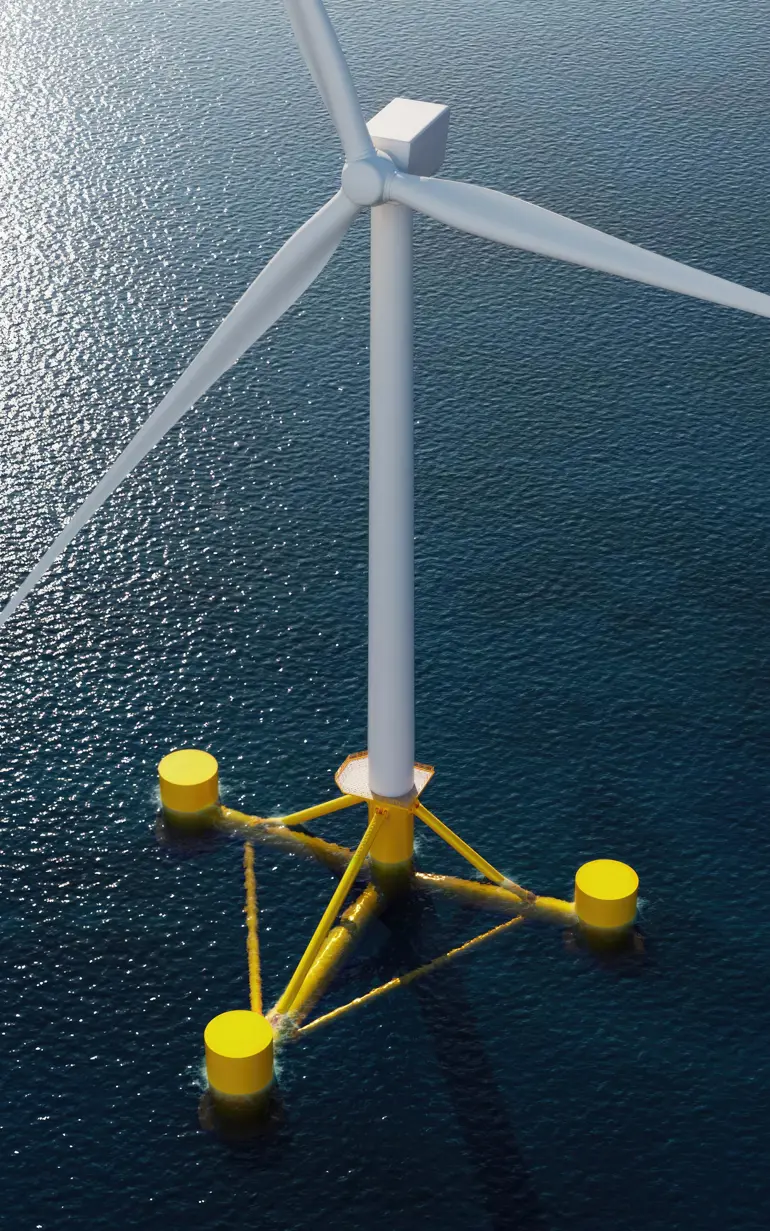
Tomorrow’s floating wind turbines to be tested at DHI
A consortium of leading Danish players will establish a test lab for floating wind turbines in the 20-MW class. This test lab will be located at DHI and will include wind, waves and a model-scale wind turbine. The measurements will be connected directly to calculation models in a 'Digital Twin' setup. Innovation Fund Denmark invests DKK 15.3 million in the project.
92% of Europe's offshore wind turbines have been produced with origin in the Danish wind industry. The next step is floating wind farms, where new projects up to 2030 are predicted to reach about half of the current installed bottom fixed capacity.
The floating foundations must be able to withstand extreme waves and storms, and their costs must be brought down. This places new demands on calculation models for both turbines and foundations. This is precisely where the new FloatLab project contributes to uncovering the new physics, reducing risks and validating the engineering models used for turbine and floating foundation design.
‘FloatLab will change the way we combine numerical models and measurement data,’ says Henrik Bredmose, Professor at DTU and leader of the project and continues: ‘We establish a direct link between the measurement setup and the calculation models, so that we can ultimately make the design process faster and more accurate.’
The laboratory will be located at DHI, where a new wind generator and a new model scale wind turbine will be built to be mounted on models of new floating foundations. The project partners are DTU, DHI, Siemens-Gamesa Renewable Energy, Stiesdal Offshore, Stromning and Ørsted, all of which draw on solid experience from floating turbines and offshore wind. Among the aspects to be tested during the project are 3D waves, loads from breaking waves, turbulence and failure of mooring lines.
‘Floating offshore wind turbines are still a relatively new technology, and production and processes are still not optimised. With FloatLab, we will increase the industry knowledge and can eventually reduce risks and costs for offshore wind entrepreneurs and thereby accelerate the green transition’, says Pietro Danilo Tomaselli, Senior Hydraulic Engineer and head of the FloatLab activities at DHI.
Stiesdal Offshore, developer of the innovative Tetra floating foundation concept, is another project partner. ‘We are excited to contribute our expertise on the Tetra foundation and provide insights into the unique challenges regarding industrialisation faced by the floating wind industry. We eagerly anticipate our involvement in the project,’ states Michael Borg, Chief Engineer at Stiesdal Offshore.
The project, which Innovation Fund Denmark invests DKK 15.3 million in, will run until 2027 with gradual upgrading of measurement setup, models and interconnections. The results will be presented at open workshops, conferences, a PhD summer school and will be included in the numerical calculation models.
Contact us
Contact usHow can we help?
With our global network of offices, we make sure you get the right answers to your local needs. Tell us about your water challenges and we will get back to you.